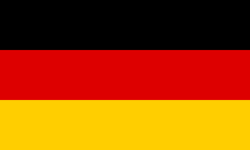
IT landscapes and enterprise architecture management
The starting point for architecture work must be the corporate strategy and, in the next stage, a description of the business models and the resulting products and processes. In parallel, the IT unit must formulate an IT strategy that is derived from the corporate strategy and provides suitable guidelines for the technical architecture. Based on this, an IT and organizational landscape corresponding to the business models and conforming to the IT strategy must be designed to ensure optimized service provision.
Today’s IT landscapes have to meet the increasing demands that result from rapidly changing business models and structures as well as increasing regulation. To ensure the required ability to act, platform models have become established which make it possible to individually balance conflicting goals regarding costs, flexibility and manageability for the respective areas of the IT landscape. In addition, implementation patterns for the respective business models have emerged in the marketplace, and the market for banking applications has reached a high level of maturity in the DACH region. For the adequate alignment of a financial service provider’s IT landscape, an understanding of the platform concept as well as the current market situation is crucial.
Modulinhalt
IT landscapes in the financial services industry – banking platforms and banking applications
- Basics of business and IT architecture in the context of banking
- Impact of the blockbuster topics of digitalization, regulation and complexity reduction on the business and IT architecture
- Impact of the platform economy – technology enablers such as cloud, API banking and CI/CD
- Typical challenges in the design of future-proof business clusters in management, sales and processing
- Concepts for dealing with different development speeds and agility in the target architecture
- Case studies on the interaction between traditional architectures and fintech building blocks
- Market overview and typical functional scope of classic banking applications (core banking systems, trading platforms, management systems, specialized applications), banking segments and differing requirements
- Market overview of trends in the fintech segment
EAM – business, IT and agile architecture management
- Enterprise architecture management – classification and application
- Requirements for end-to-end architecture management against the background of increasing agility in financial services
- Dovetailing project portfolio management and architectural work – effective transformation management
- COBIT standards to ensure MaRisk compliance
- Fundamentals and building blocks of business and IT architecture management (architecture framework)
- Architectural evaluation: identification of current performance level of the IT landscape as well as functional and technical gaps
- Definition of medium-term line of IT development (development plan)
- Architecture approaches and standards for applications, infrastructure, production and data
- Communication and benefit argumentation of the architectural work and its importance for the organization
In this module, typical solution patterns for different business models and platforms at financial service providers are explained by means of example architectures. In addition, the module presents practical concepts for enterprise architecture management (EAM) which enable a close integration of business and IT perspectives and thus the development and management of a target-compliant and optimized IT landscape.





